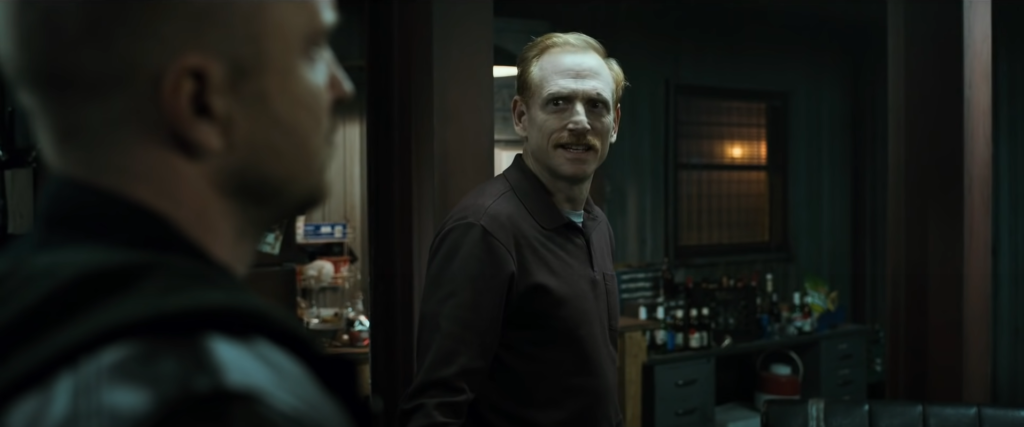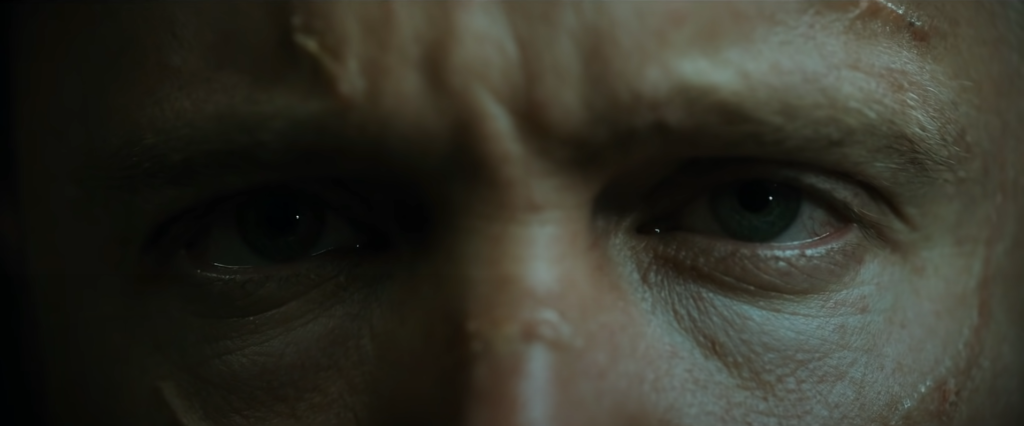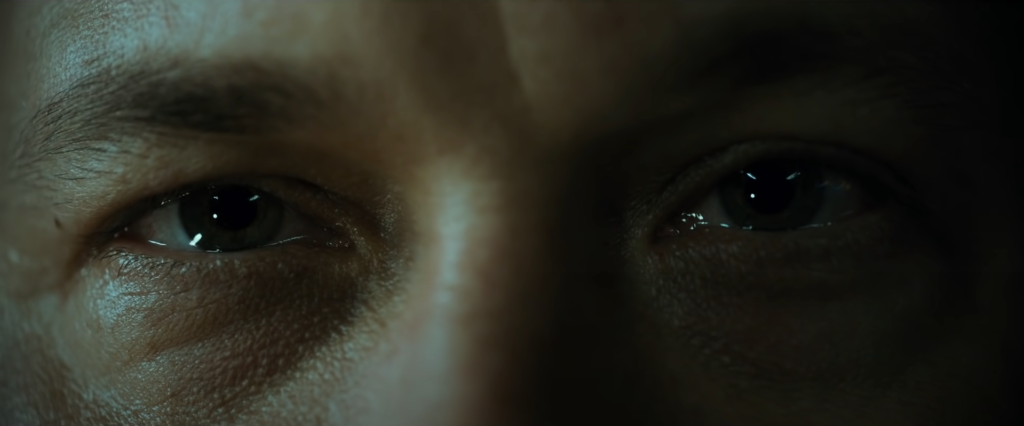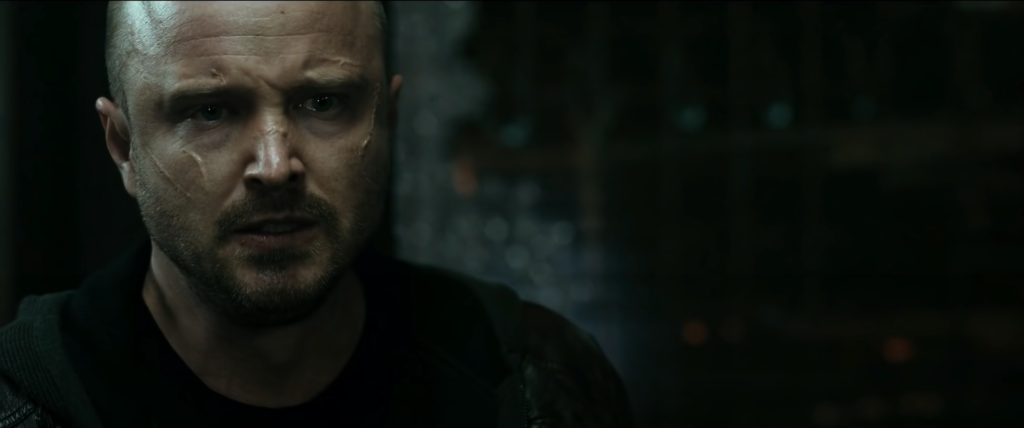The use of mise-en-scene within El Camino: A Breaking Bad Movie, directed by Vince Gilligan, creates a post-apocalyptic atmosphere within a crime underworld in 2010 Albuquerque, New Mexico. Following the events of the TV series, the plot follows Jesse Pinkman (Aaron Paul) as he flees law enforcement in search of freedom from the life of crime he was forced into.

In this scene, Jesse has a shootout with one of the people who had imprisoned him for months before the narrative takes place, Neil Kandy. From the mise-en-scene within this first shot, it’s obvious that the men in this building are considered very “masculine” and fit the stereotype of the classic American man. Imagery that reinforces this idea is the calendar on the fridge – bearing a woman in revealing clothing – The cans of beer and other bottles of alcohol placed around the room, and the various pieces of equipment such as the dolly and buckets, which represents the hard labouring jobs that men typically work in. The colour palette also links to this idea, with dull browns and greys in the walls, floors, and ceilings of the room, and even in the outfits of each man. From the first shot alone, it’s obvious that this is ‘no place for a woman’.


These next two shots provide more insight into the state of the ‘man cave’ that these men are placed it, which in turn helps to foreshadow the brutal display of violence that is to come as this scene progresses. The use of lighting in these two shots keeps the faces of Jesse and Neil more darkened as compared to the other man in shot, with the light above him. This suggests the third man’s innocence compared to Jesse and Neil when relating to acts such as murder and other serious crimes. It creates links to the dark truth that at least one of the men isn’t making it out of the room alive, and implies the heavy weight of the situation.


These two shots from the scene, which make use of the 180 degree rule, display the fearlessness and courage within both characters. The camera focuses more on the men in this sequence, preventing the audience from focusing on anything else in the scene as the tension builds, forcing them to think about what happens next. The second shot also shows Jesse’s scars close up, suggesting that he’s lived through hell and is content with either outcome, but the expression and confidence in his facial expressions show that he knows he’ll win, which is concealed from the audience in plain sight.

In this shot, Jesse is made as the focal point of the image, his eyeline matching with the gun. Again, this shot tries to force an audience to focus on the characters to raise tension, and does so by first focusing on the gun in Neil’s holster to then focus on Jesse, hand ready to grab his gun.

The use of other objects placed around the room, such as this other gun hung up in a holster on the wall, further adds to the tension by suggesting that the man in shot plans to do something to kill Jesse before it’s too late.


Gilligan then uses a match cut between Jesse and Neil’s eyes in an extreme close up, bringing the suspense to a breaking point as the gunfight breaks out.

As the fight ends, the camera then focuses on only Jesse once again, displaying the look of trauma and regret he feels after killing the two other men. It juxtaposes the mercilessness that other characters within the series have shown while killing others for petty reasons, such as greed, as opposed to Jesse’s desire for survival.
Gilligan’s use of mise-en scene helps amplify the terror and suspense, and uses colour as a key storytelling element, often increasing the tint of blues and oranges to create tone.